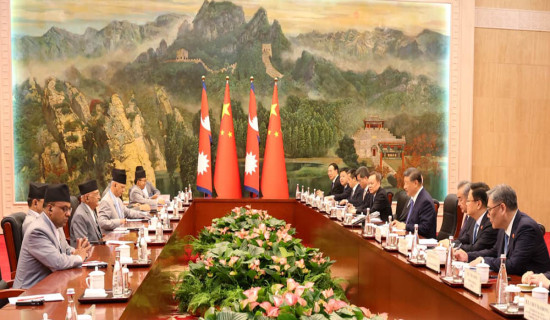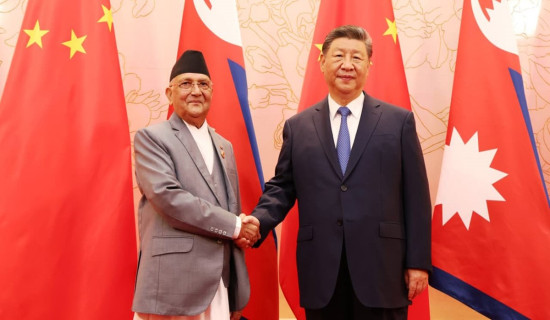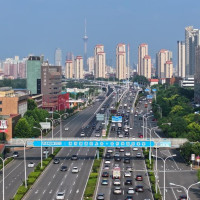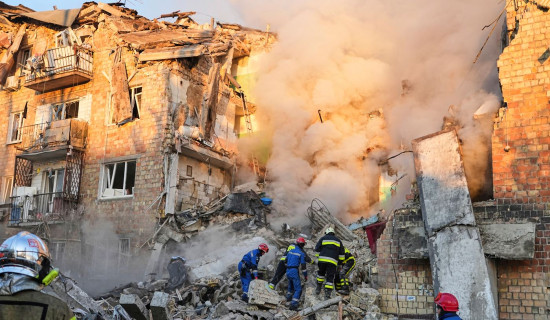- Sunday, 31 August 2025
Global Conflicts Reshaping Aviation Industry
Conflicts around the world are increasingly disrupting not only borders on land but also the routes we travel in the sky. As of mid-2025, nearly half a million commercial flights have been diverted or delayed due to geopolitical instability, pushing airline operational costs past one billion US dollars. For a country like Nepal, deeply connected to the outside world through aviation, these shifts are not abstract; they are personal and immediate. In June this year, tensions in the Middle East once again escalated. Following airstrikes between Israel and Iran, multiple countries closed off their airspace.
Airlines like Air India had to cancel over 80 long-haul flights, while others rerouted through alternative corridors, adding up to an hour in flying time. This meant more fuel burn, longer crew duty periods, and higher ticket prices, something travellers immediately feel in their pockets.
Closer to South Asia, Pakistan's airspace restrictions against Indian airlines added more confusion. Since April, flights heading west from India have faced extended journeys, some by nearly three hours, resulting in delays across regional and European routes. Meanwhile, the tragic downing of a cargo flight in Sudan in May left a grim reminder of how real these risks are.
These incidents are part of a troubling pattern.
Ripple effects
In early May, missiles landed near Ben Gurion Airport in Israel, prompting temporary shutdowns. In Russia, ongoing drone attacks on civilian airports, especially around Moscow, have interrupted hundreds of services. From commercial airliners to humanitarian aid flights, nothing is immune to the ripple effects of military conflict. According to the International Air Transport Association (IATA)’s 2025 mid-year report, passenger revenue is expected to hit 693 billion US dollars this year, marking a 5.8 percent rise in travel demand. But cargo revenue is down by nearly five percent, and total airline profits are expected to flatten at 36 billion dollars, lower than initially forecast. Much of this strain is due to rerouted paths, security premiums, and higher insurance costs in high-risk zones.
Nepal is not in a war zone, but it is not spared either. Many flights into and out of Tribhuvan International Airport pass through Middle Eastern or South Asian air corridors that are now under frequent review or restriction. This has led to ticket price hikes of 10 to 15 per cent on some routes and increased costs for airlines operating in and out of Kathmandu. Nepal Airlines reported a 15 percent rise in overall operating expenses during the second quarter of this year.
This has a knock-on effect on Nepali migrant workers, who number around 300,000 in the Gulf region. Flight delays and cancellations affect their travel, job start dates, and, indirectly, the nine billion US dollars in annual remittances that support families back home.
Even pilgrimage travel has become less predictable, with strict visa enforcement and safety advisories dissuading journeys to Mecca or Jerusalem. For those relying on humanitarian flights, the landscape is no better. Closed runways in Sudan, damaged infrastructure in Ukraine, and unpredictable skies over Yemen have hindered aid efforts. Although Nepal may not send such flights often, its aid partnerships and diplomatic image rely on functioning air corridors.
There is also the issue of safety. The tragic memory of Malaysia Airlines Flight MH17, shot down in 2014, still haunts the industry. While nothing as catastrophic has occurred recently, near-miss incidents involving commercial jets and military activity have increased. Pilots now have to navigate increasingly complicated Notices to Airmen, warning of drones, missiles, and defensive air systems.
Diversifying transit routes
So, what can Nepal do? First, the government should work to build alternative air service agreements with more stable partners. Diversifying transit routes could prevent future overdependence on any single region. Second, Nepal’s Civil Aviation Authority could benefit from improved airspace risk mapping, including better use of satellite data and international coordination platforms.
Third, investing in domestic tourism and regional connectivity can cushion the blow when international routes face disruption. Promoting internal air travel, improving airport infrastructure in provinces beyond Kathmandu, and strengthening safety compliance will make Nepal more resilient overall. Jet fuel prices have stabilised at 86 US dollars per barrel this year, offering some cost relief. But that saving could vanish if insurance and rerouting continue to climb. Airlines will need to work smarter, not just harder, to stay profitable.
Aviation is more than just transportation. It is an essential link in Nepal’s economy, connecting workers, students, tourists, and trade. As global airspace becomes more unpredictable, Nepal must be proactive, not reactive. That means keeping a close eye on geopolitical developments, maintaining neutrality in diplomacy, and planning with flexibility in mind. The skies may not always be safe, but with calm decision-making and a firm grasp of global trends, Nepal can continue to fly, not just in the air, but toward opportunity.
(Basnet is currently studying MSc in Air Transport Management at the University of Surrey, United Kingdom.)
















